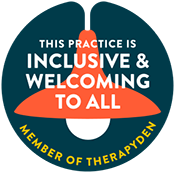What to expect from EMDR Therapy
Trauma doesn’t just live in your memories—it lives in your body, your nervous system, and your beliefs about yourself and the world. Even long after something painful has happened, you might find yourself stuck in patterns of anxiety, hypervigilance, shame, or self-doubt that feel hard to explain and even harder to change.
EMDR therapy offers a way to gently and effectively reprocess those experiences—so they no longer hold the same emotional charge or disrupt your present-day life. It’s not about erasing the past, but about freeing you from the weight of it, so you can move forward with more clarity, confidence, and self-trust.
A structured, supported path to healing from trauma
EMDR (Eye Movement Desensitization and Reprocessing) is an evidence-based therapy originally developed for trauma and PTSD. It helps your brain do something it already knows how to do: reprocess and integrate overwhelming or distressing experiences that got “stuck” in your nervous system.
Instead of retelling your story over and over again, EMDR uses a structured process and a tool called bilateral stimulation (often eye movements, tapping, or alternating tones) to help your brain safely access and reprocess memories—so they feel more like something that happened, rather than something you’re still reliving.
You remain fully in control throughout the process. You don’t have to talk through every detail. You set the pace. My role is to guide you gently, making sure you feel safe and supported every step of the way.
What Is EMDR Therapy, Exactly?
- PTSD or trauma from a single incident or complex history
- Anxiety and panic
- Low self-worth or persistent negative beliefs about yourself
- Flashbacks or intrusive memories
- Emotional reactivity or shutdown
- Childhood abuse or neglect
- Grief and loss
- Relational wounds or attachment trauma
What EMDR Can Help With
Here’s what it typically looks like:
What to Expect in the EMDR Process
In this phase, we also focus on building internal resources—including grounding techniques and tools to regulate your nervous system. These help you feel more stable and supported before we begin any memory reprocessing.
Step 1: Assessment and Preparation
Step 2: Identifying the Target
You’re never reliving the trauma—you’re observing it from a safe distance, and I’m right there with you, tracking your experience and helping regulate anything that feels overwhelming. You stay in control, and we pause or adjust at any time.
Step 3: Reprocessing with Bilateral Stimulation
EMDR isn’t a one-time event—it’s a process. We’ll move at a pace that feels right for you, always returning to regulation and safety along the way.
Step 4: Integration and Closing
My Approach to EMDR
Ready to Begin?
Schedule a consultation Call
Finding the right therapist is an important step, and this consultation is a chance for us to see if we’d be a good fit. In this brief call, we’ll talk about what you’re looking for in therapy, how I may be able to help, and whether my expertise aligns with your needs. This is also an opportunity for a quick “fit check”—therapy works best when you feel comfortable with your therapist, so we’ll get a sense of how we connect before scheduling an intake session. There’s no pressure or obligation—just a chance to explore whether working together feels right for you.
15-Minute Consultation
Free
We’ll talk about what you’re looking for in therapy, how I may be able to help, and whether my expertise aligns with your needs. It's a no pressure "fit check."
